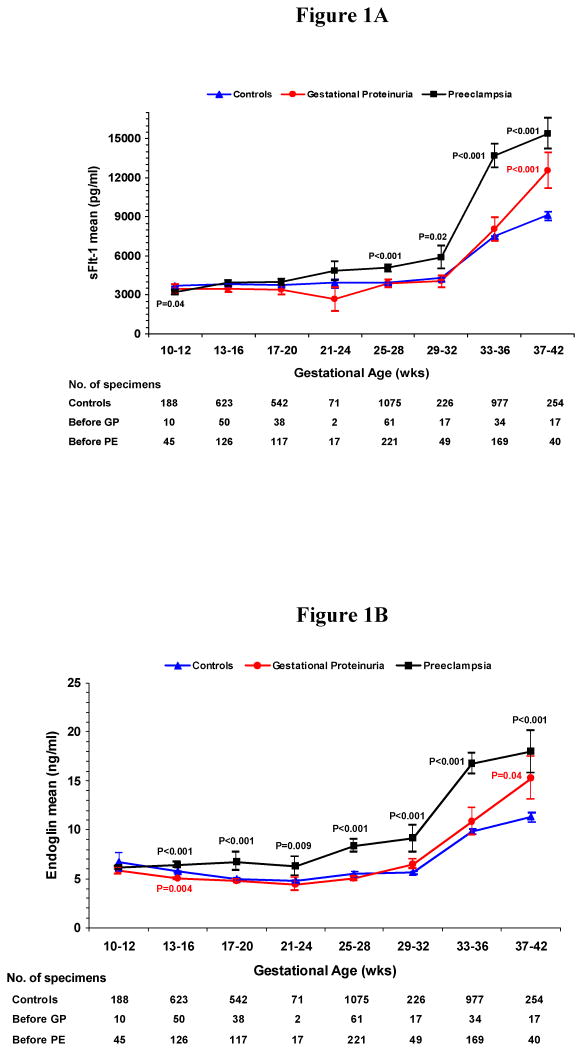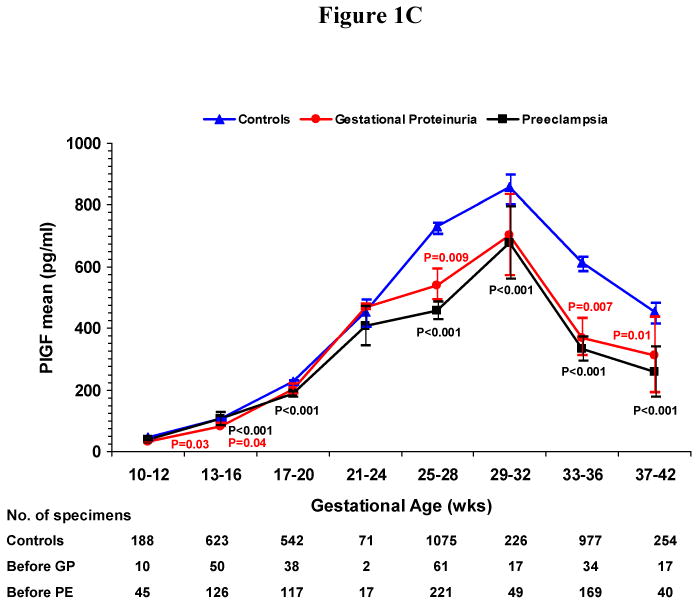Figure 1. Figure 1A. Mean Serum Concentration of Soluble Fms-like Tyrosine Kinase 1 (sFlt-1) According to Gestational Age, Figure 1B. Mean Serum Concentration of Soluble Endoglin (sEng) According to Gestational Age, Figure 1C. Mean Serum Concentration of Placental Growth Factor (PlGF) According to Gestational Age.
Figures 1A-C show the mean serum concentrations of sFlt-1, sEng and PlGF within gestational age intervals in women who later had gestational proteinuria (GP), those who later had pre-eclampsia (PE) and normotensive controls. I bars represent standard errors. Specimens from women with gestational proteinuria and pre-eclampsia were collected before onset and analyzed within pre-selected intervals, using the earliest serum specimen when more than one serum specimen was available. The number of specimens within each gestational age interval is noted below the figures. Statistical testing was performed on logarithmically transformed values. Only significant P values are reported and are for the comparisons with controls. The difference between mean serum concentrations of sFlt-1 (Figure 1A) in women who developed gestational proteinuria and women who later had pre-eclampsia was significant at 25 to 28 (P=0.01) and 33 to 36 weeks (P<0.001). For sEng (Figure 1B), the difference between women who developed gestational proteinuria and pre-eclampsia was significant at 13 to 16 weeks (P<0.001), 17 to 20 weeks (P=0.001), 25 to 28 weeks (P<0.001), and 33 to 36 weeks (P<0.001). For PlGF (Figure 1C), the difference was significant only at 25 to 28 weeks (P=0.008), the interval with the greatest number of serum samples from all three groups of women.


